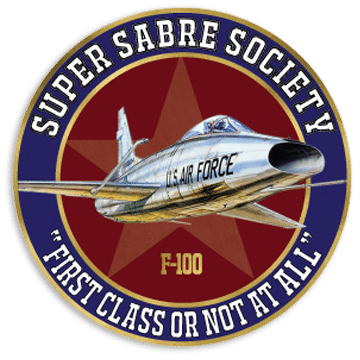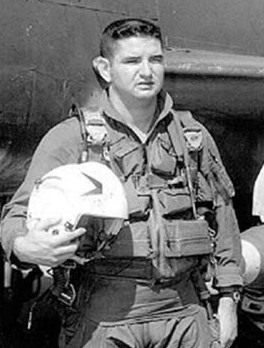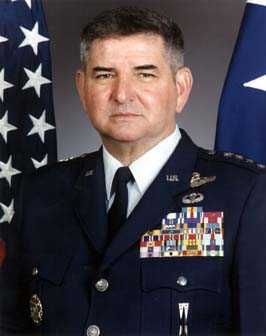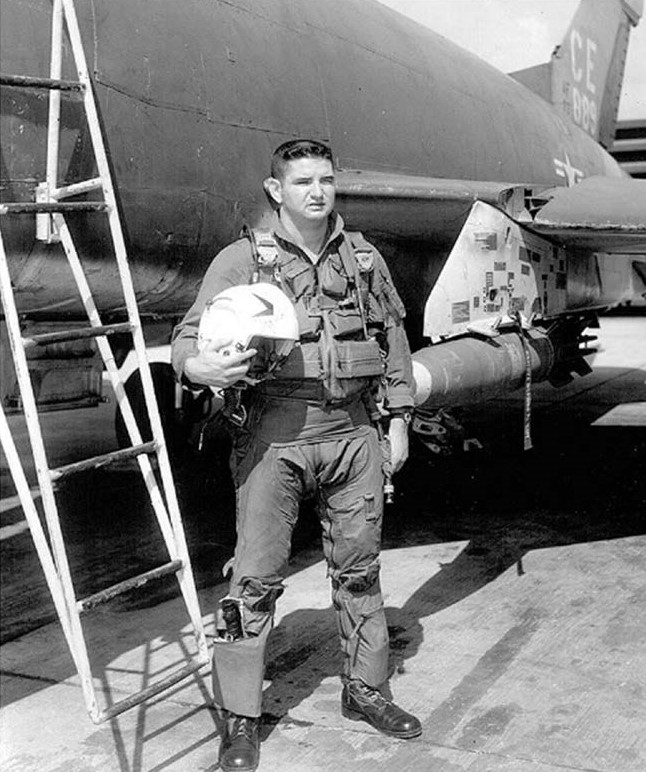Military Biography
General Ron Fogleman retired from the USAF after 34 years of active commissioned service. On his final tour of duty General Fogleman served as the 15th Chief of Staff of the U.S. Air Force and a member of the Joint Chiefs of Staff. Prior to that assignment he was Commander in Chief of the U.S. Transportation Command (CINCTRANS). As Chief of Staff, he served as the senior uniformed officer responsible for the organization, training and equipage of 750,000 active duty, Guard, Reserve and civilian forces serving in the United States and Overseas. As a member of the JCS, he served as a military advisor to the Secretary of Defense, the National Security Council and the President. 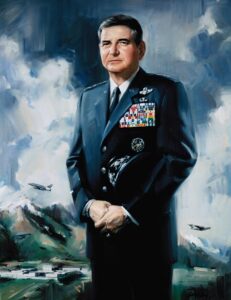
General Fogleman is an active pilot with an extensive background in fighters, mobility aircraft and general aviation. He has flown over 8,400 total hours. His fighter experience included operational tours in the F-100, F-4, F-15, F-16 and A-10. He served two tours in Southeast Asia during the Vietnam War flying 315 combat missions and logging 806 hours of combat fighter time. On his first tour he flew 80 missions as a Misty Fast FAC. While serving as USCINCTRANS and Commander of the Air Mobility Command he flew mobility aircraft in support of humanitarian and contingency operations on six continents. Other senior command positions held include: Deputy Commander in Chief, U.S. Forces Korea; Commander 7th Air Force and Commander Air Component Command of the US/ROK Combined Forces Command; Commander 836th Air Division; and Commander of the 56th FW.
General Fogleman’s staff experience saw a heavy emphasis on long-range programming and strategic planning. While serving as Chief of Staff, United States Air Force, he hosted the first world-wide conference of air chiefs. He has a Bachelor’s degree from the USAF Academy and a Master’s degree in Military History and Political Science from Duke University.
Post-Military Service
General Fogleman is currently the Chairman of the Board of Tactical Air Support Inc., Chairman of Million Air FBO and serves as a board member on Black Mountain Investments, and the Tlingit Haida Tribal Business Corporation. He has chaired and served on the boards of numerous public and private corporations. He devotes considerable time to national security and community affairs. He is a member of the Falcon Foundation, Airlift Tanker Association, Council on Foreign Relations, and the Air Force Association. Since retiring from the Air Force he has served on the Defense Policy Board, The National Aeronautics and Space Administration Advisory Council, the Jet Propulsion Laboratory Advisory Board, chaired an Air Force Laboratory study on directed energy weapons, chaired a National Research Council Committee on Aeronautics Research and Technology for Vision 2050: An Integrated Transportation System, served on the NASA Mars Program Independent Assessment Team, the congressionally directed Commission to Assess United States National Security Space Management and Organization, the NASA Shuttle Return to Flight Task Group and the Independent Assessment Panel to Examine the Management and Organization of National Security Space Assets. He lectures on leadership, international affairs and military issues and has published numerous articles on air and space operations.
Major Post-Military Career Awards:
Arizona Aviation Hall of Fame Inductee, 1998
USAFA Distinguished Graduate Award, 2001
Gathering of Eagles Inductee 1998, 2013
National Wrestling Hall of Fame Inductee, 2006
Airlift Tanker Association Hall of Fame Inductee, 2013
USAFA Character and Leadership Award, 2014
Air Force Historical Foundation Spaatz Award, 2015
Air Force Association Lifetime Achievement Award, 2017
National Aviation Hall of Fame Inductee, 2018
Commemorative Air Force Aerospace Leadership Award, 2022
On Sept. 12, 1968, F-100D pilot Capt. Ronald Fogleman was shot down in the I Corps area 200 miles (320 km) north of Bien Hoa while flying aircraft 56-3245. He ejected over hostile territory and hid on the ground in a rice paddy, submerged up to his neck, undetected by the enemy that was as close as 20 yards. He was picked up by a Cobra helicopter and rode out clinging to the chopper’s open ammo bay door until reaching the safety of a Special Forces camp. The next day he went out again on one of the 240 combat missions he flew while stationed in Vietnam. Fogleman became the only Super Sabre pilot ever rescued by riding out on a Cobra helicopter.
(source: https://www.defensemedianetwork.com/stories/f-100-super-sabre-flew-most-missions-in-vietnam/)and https://www.atalink.org/content/2013/11/01/2013-general-ronald-r-fogleman-usaf-ret/)
Read more at https://www.airspacemag.com/military-aviation/the-misty-mystique-3494168/#uOqwXIE7f8umHA23.99
